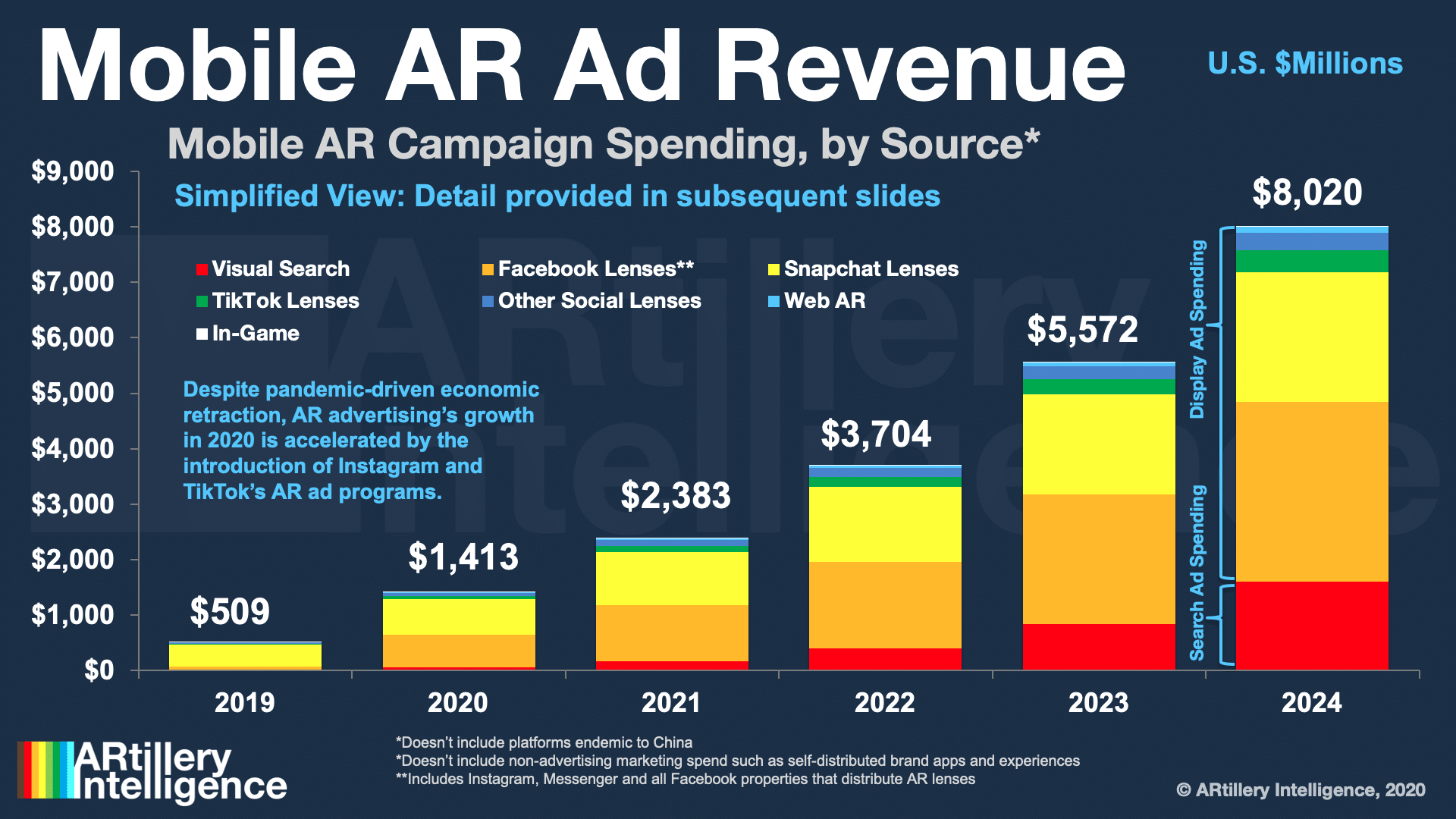
 Data Dive is AR Insider’s weekly dive into select spatial computing figures. Running Mondays, it includes data points and strategic takeaways. For an indexed library of data, reports, and multimedia, subscribe to ARtillery Pro.
Data Dive is AR Insider’s weekly dive into select spatial computing figures. Running Mondays, it includes data points and strategic takeaways. For an indexed library of data, reports, and multimedia, subscribe to ARtillery Pro.
Snap’s Q2 earnings announcement last week brought good news and bad. The bad news is that net losses widened 28 percent year-over-year (YoY) to $326 million. YoY revenue growth also decelerated from pre-Covid levels of 58 percent (January and February) to 17 percent in Q2.
But the good news is that YoY revenue growth so far in Q3 is 32 percent. Meanwhile, Q2’s 17 percent growth is respectable considering Snap is an ad-centric business in a global pandemic, where recessionary economics (like most downturns) hit ad spending particularly hard.
More good news comes from AR efforts, where Q2 saw a 37 percent increase in year-over-year lens use. As we’ve examined, pandemic lockdowns have a polarizing effect: Some sectors grow (gaming, eCommerce), while others plummet (bars, events). AR lenses are in the former bucket.
“The number of Snaps created every day grew at double the pace of our daily active user growth over the past year,” said Evan Spiegel on the earnings call. “Adoption of our AR platform is also accelerating, with the number of people playing with lenses every day growing 37 percent YoY.”

Escapism & ROI
That AR user growth is propelled by a few factors. There’s a certain escapism with the whimsy of AR lenses, as we’ve examined. Moreover, they’re tied to an area that sees Covid-era inflections: digital communications. These factors boost the AR lens growth that was already underway.
Most of the above is in the context of community lenses and “organic” fare. But there’s also an advertising & commerce angle. AR visualization gains value when we can’t touch and feel things in physical stores. So user demand — or at least receptiveness — for AR shopping accelerates.
Those demand signals compel brand-marketers to consider AR lenses in their advertising mix. Beyond meeting demand, AR has a strong value proposition in its tangible ROI from lower-funnel “try-before-you-buy” conversions. That can stand out during ad budget-cuts and reallocations.
And that’s exactly what happens in market retractions: Brands not only lower their budgets but they rethink and shift spend to more streamlined and cost-efficient formats. Historically, this is where we see digital transformation not only spike, but sometimes sustain long-term.
This could be the case with AR advertising as brands are driven by external factors to adopt… then like what they see and become permanent AR converts. This concept of new discoveries that flow from forced adoption and perspective is a Covid-era theme we’ll continue to see.

Slowed Growth
For all of these reasons, our research arm ARtillery Intelligence projects aggregate AR advertising revenues to grow in 2020. Estimates are scaled back from pre-covid growth curves, but growth will nonetheless happen, buttressed by existing momentum and the above dynamics.
Panning back to the overall ad picture for Snapchat (not just AR lenses) the company is faring better than most ad-supported media. Several of the above factors — plus Facebook’s advertiser exodus, Twitter’s woes and TikTok bans — could send advertisers into Snap’s open arms.
Also working in Snap’s favor is its relative strength in reaching key demographics such as Gen-Y (millennials) and Gen-Z. Snapchat also offers a streamlined programmatic self-serve approach, and is more nimble than its maturer and innovator’s-dilemma bound competitors.
Speaking of competitors, Snap’s Q2 earnings came first among social media giants, so it sort of sets the bar. Twitter’s subsequent earnings were hit harder, and we’ll see how Facebook fares this week. The name of the game will be to acquire budget-shifting advertisers during a market reset.
“While our revenue growth rate continues to be impacted by ongoing market disruptions,” Spiegel said, “the fundamentals of our business are strong, and the high levels of engagement on our service are backed by years of investment in our self-serve advertising platform.”
Header Image Credit: Snap, Inc.
